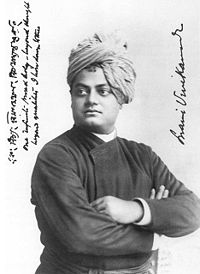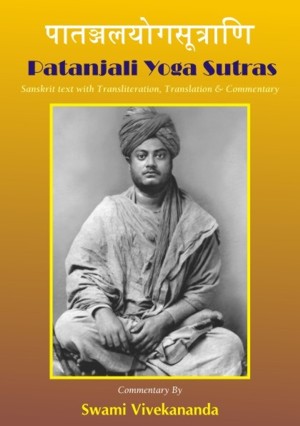45. सूक्ष्मविषयत्वम्चालिण्ग पर्यवसानम् ॥४५॥
sūkṣma-viṣayatvam-ca-aliṇga paryavasānam ||45||
The finer objects end with the Pradhana.
The gross objects are only the elements, and everything manufactured out of them. The fine objects begin with the Tanmatras or fine particles. The organs, the mind[1], egoism, the mind-stuff (the cause of all manifestion) the equilibrium state of Sattva, Rajas and Tamas materials - called Pradhana (chief), Prakrti (nature), or Avyakta (unmanifest), are all included within the category of fine objects. The Purusa (the Soul) alone is excepted from this definition.
46. ता एव सबीजस्समाधिः ॥४६॥
tā eva sabījas-samādhiḥ ||46||
These concentrations are with seed.
These do not destroy the seeds of past actions, thus cannot give liberation, but what they bring to the Yogi is stated in the following aphorisms.
47. निर्विचारवैशारद्येऽध्यात्मप्रसादः ॥४७॥
nirvicāra-vaiśāradye-'dhyātma-prasādaḥ ||47||
The concentration “without reasoning” being purified, the Chitta becomes firmly fixed.
48. ऋतंभरा तत्र प्रज्ञा ॥४८॥
ṛtaṁbharā tatra prajñā ||48||
The knowledge in that is called “filled with Truth.”
The next aphorism will explain this.
49. श्रुतानुमानप्रज्ञाभ्यामन्यविषया विशेषार्थत्वात् ॥४९॥
śruta-anumāna-prajñā-abhyām-anya-viṣayā viśeṣa-arthatvāt ||49||
The knowledge that is gained from testimony and inference is about common objects. That from the Samadhi just mentioned is of a much higher order, being able to penetrate where inference and testimony cannot go.
The idea is that we have to get our knowledge of ordinary objects by direct perception, and by inference therefrom, and from testimony of people who are competent. By “people who are competent,” the Yogis always mean the Rishis, or the Seers of the thoughts recorded in the Scriptures - the Vedas. According to them, the only proof of the Scriptures is that they were the testimony of competent persons, yet they say the Scriptures cannot take us to realisation. We can read all the Vedas, and yet will not realise anything, but when we practise their teachings, then we attain to that state which realises what the Scriptures say, which penetrates where reason cannot go, and where the testimony of others cannot avail. This is what is meant by this aphorism, that realisation is real religion, and all the rest is only preparation - hearing lectures, or reading books, or reasoning, is merely preparing the ground; it is not religion. Intellectual assent, and intellectual dissent are not religion. The central idea of the Yogis is that just as we come in direct contact with the objects of the senses, so religion can be directly perceived in a far more intense sense. The truths of religion, as God and Soul, cannot be perceived by the external senses. I cannot see God with my eyes, nor can I touch Him with my hands, and we also know that neither can we reason beyond the senses. Reason leaves us at a point quite indecisive; we may reason all our lives, as the world has been doing for thousands of years, and the result is that we find we are incompetent to prove or disprove the facts of religion. What we perceive directly we take as the basis, and upon that basis we reason. So it is obvious that reasoning has to run within these bounds of perception. It can never go beyond: the whole scope of realisation, therefore, is beyond sense perception. The Yogis say that man can go beyond his direct sense perception, and beyond his reason also. Man has in him the faculty, the power, of transcending his intellect even, and that power is in every being, every creature. By the practice of Yoga that power is aroused, and then man transcends the ordinary limits of reason, and directly perceives things which are beyond all reason.
 Swami Vivekananda
Swami Vivekananda
